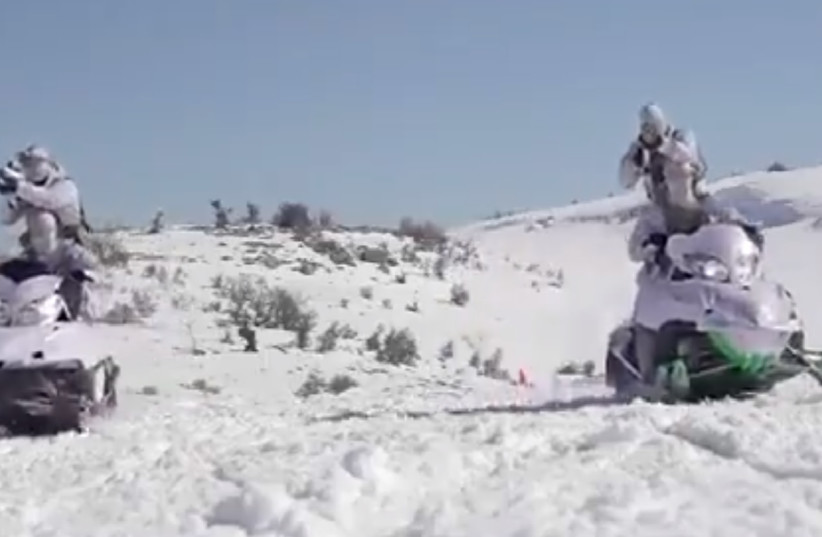Hezbollah’s elite ski unit took to the slopes in south Lebanon, preparing to fight against Israeli troops.
In a video shared on Twitter, at least eight Hezbollah operatives were seen firing assault rifles and handguns towards Israeli targets while on skis and Skidoos.
The video, which was accompanied by dramatic music, also showed the operatives doing hand-to-hand combat in the snow and warning Israel that “Hezbollah has a characteristic that fear marches in front of him.”
Like IDF troops in the military’s reserve Alpine Unit, operatives in the video were wearing white uniforms to camouflage with the snow in south Lebanon.
The military’s alpine unit consists of reserve soldiers who serve in elite infantry units during their active duty. In the winter, they patrol Mount Hermon, which straddles the Lebanon and Syrian borders, while regular infantry units patrol during the summer months.

The Israeli-controlled side of the mountain reaches a height of 7,300 feet. On a clear day Syria’s capital – only 40 kilometers away – can be seen, about as far away as Kiryat Shemona, and half the distance to Tiberias.
Israel seized most of the strategically located Golan Heights from Syria in the 1967 Six Day War; Jerusalem later annexed the territory in a move never recognized by the international community.
While the borders near the Hermon have been relatively quiet, several anti-aircraft missiles were fired toward Israel’s only ski resort in recent years from Syria where Hezbollah continues to have a large presence.
Israeli officials have repeatedly voiced concerns over Iran’s presence in Syria and the smuggling of sophisticated weaponry to Hezbollah from Tehran to Lebanon via Syria, stressing that both are redlines for the Jewish state.
Israel and Hezbollah fought a deadly 33-day war in 2006, coming to an end under UN Security Council Resolution 1701, which called for the disarmament of Hezbollah, withdrawal of the Israeli army from Lebanon, the deployment of the Lebanese army, and an enlarged UN force in the South.
Though the defense establishment does not see a war breaking out with Iran or its proxies such as Hezbollah in Syria, Israel’s military has increased the amount of training for troops and reserve forces like the Alpine Unit.
The IDF has been training in Israel’s Golan Heights for another war with the terror group, which over the years since the Second Lebanese War has morphed into a more mobile army with more advanced weaponry, able to draft large amounts of fighters and deploy them quickly into enemy territory.
Hezbollah has been described by senior military officers as the strongest army in the Middle East after the IDF.
